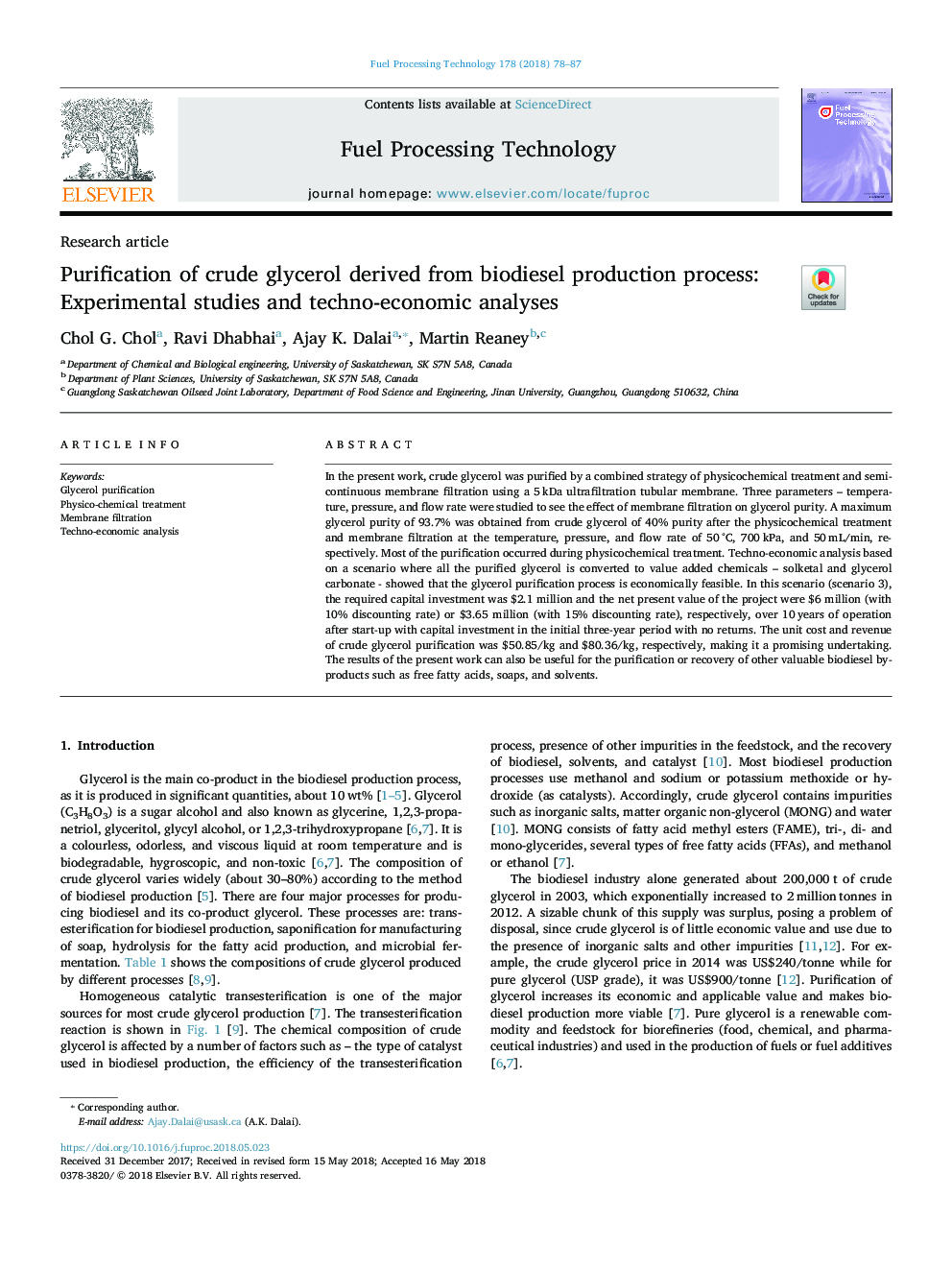| Article ID | Journal | Published Year | Pages | File Type |
|---|---|---|---|---|
| 6656276 | Fuel Processing Technology | 2018 | 10 Pages |
Abstract
In the present work, crude glycerol was purified by a combined strategy of physicochemical treatment and semi-continuous membrane filtration using a 5â¯kDa ultrafiltration tubular membrane. Three parameters - temperature, pressure, and flow rate were studied to see the effect of membrane filtration on glycerol purity. A maximum glycerol purity of 93.7% was obtained from crude glycerol of 40% purity after the physicochemical treatment and membrane filtration at the temperature, pressure, and flow rate of 50â¯Â°C, 700â¯kPa, and 50â¯mL/min, respectively. Most of the purification occurred during physicochemical treatment. Techno-economic analysis based on a scenario where all the purified glycerol is converted to value added chemicals - solketal and glycerol carbonate - showed that the glycerol purification process is economically feasible. In this scenario (scenario 3), the required capital investment was $2.1 million and the net present value of the project were $6 million (with 10% discounting rate) or $3.65 million (with 15% discounting rate), respectively, over 10â¯years of operation after start-up with capital investment in the initial three-year period with no returns. The unit cost and revenue of crude glycerol purification was $50.85/kg and $80.36/kg, respectively, making it a promising undertaking. The results of the present work can also be useful for the purification or recovery of other valuable biodiesel by-products such as free fatty acids, soaps, and solvents.
Related Topics
Physical Sciences and Engineering
Chemical Engineering
Chemical Engineering (General)
Authors
Chol G. Chol, Ravi Dhabhai, Ajay K. Dalai, Martin Reaney,
